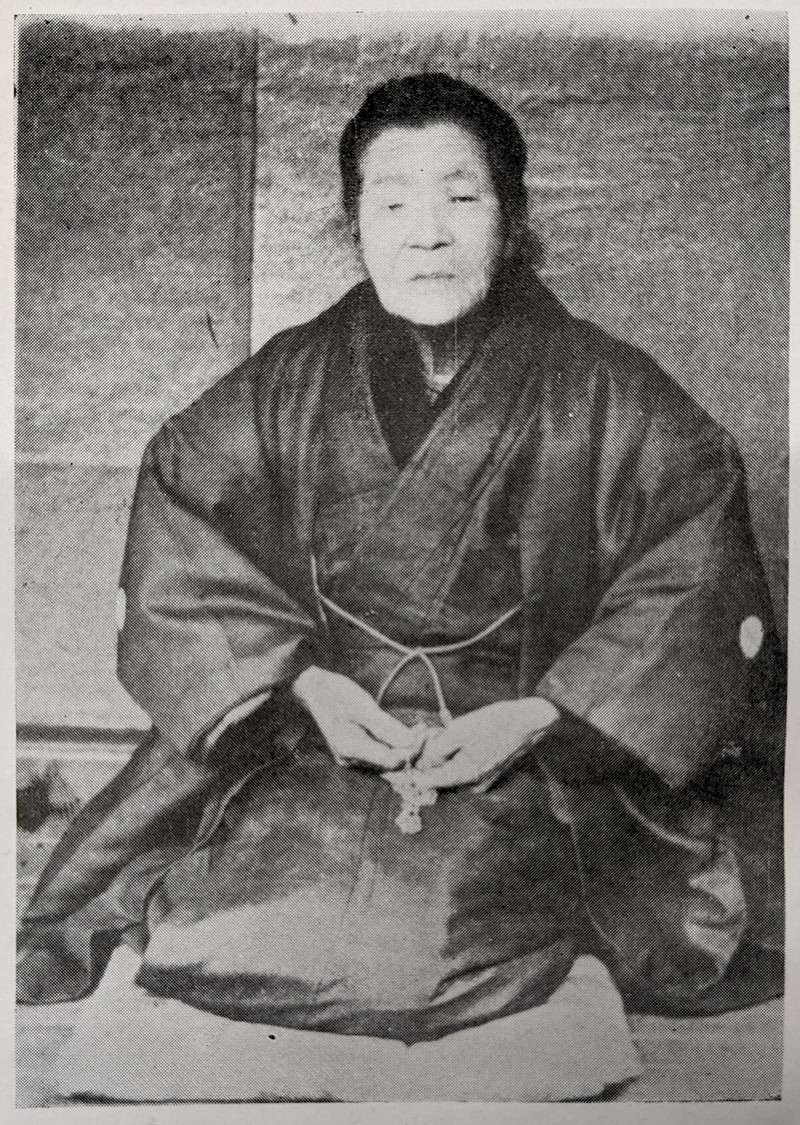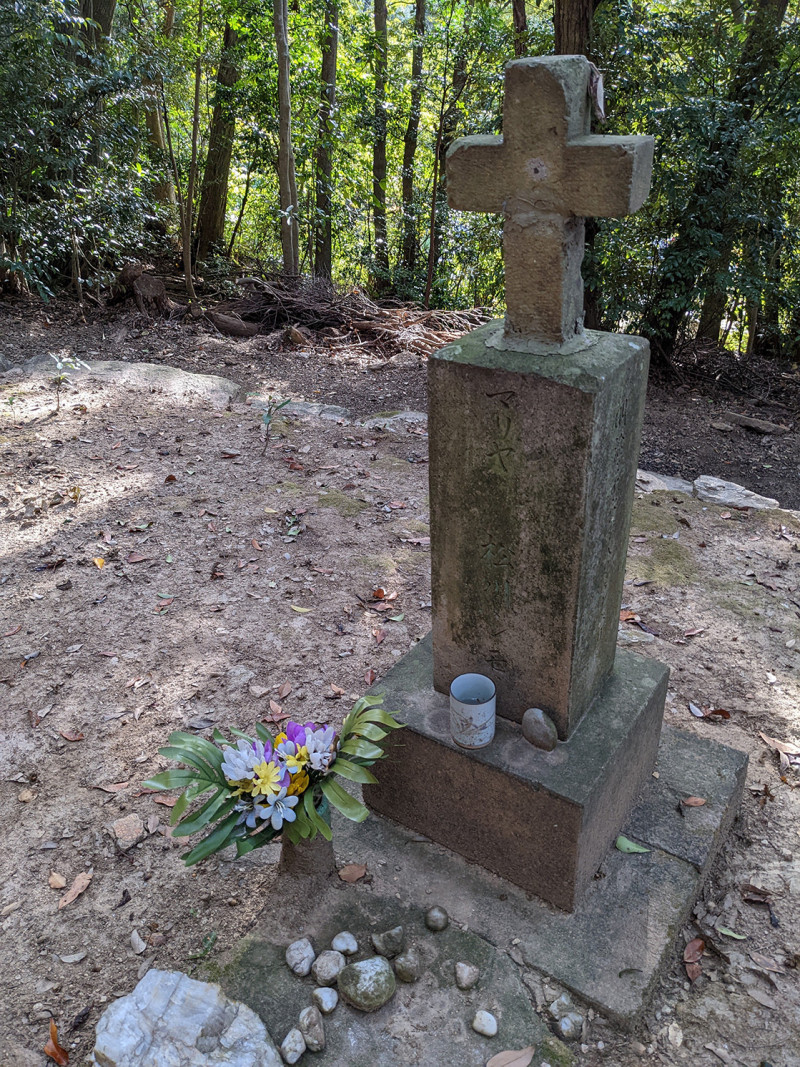
Japan's Hidden Christians

The interviews included in this project are part of a new oral history of the culturally hybrid Gotō Islands. It offers insights into both Japanese society and Asian history by detailing a group of people on the margins of the Japanese state whose history and culture have been closely intertwined with their local surroundings. As will be clear in the interview transcripts, Japan's Hidden Christians are heterogeneous and exist within multiple temporal, geographic, and social formations. Unsurprisingly, patterns of social organization and religious practice during the persecution period are distinct from the patterns of social organization and cosmological beliefs that functioned during the non-persecution period.
Therefore, keep in mind that modern scholars write about the Hidden Christians using two Japanese terms: 1. Sempuku Kirishitan, referring to Hidden Christians prior to 1873, and 2. Kakure Kirishitan, referring to Hidden Christians who did not return to Catholicism following the persecution period, from 1873 to the modern day.
Meanwhile, the regional and temporal differences between Hidden Christian groups has been the subject of much study over the years.
The French Mission first came into contact with Hidden Christian groups in the 1860s. They observed, writes Crystal Whelan, that different communities used varying names about themselves: Kirishitan, Bateren, or Dogio, depending on whether their original teachers were from Franciscan, Jesuit, or Dominican orders.
On the Upper Gotō, Tagita wrote, Hidden Christian groups were called furu-chō 古帳, and in the central (most likely Naru Island) region they were called moto-chō 元帳.
More recently, Japanese historian and religious scholar Miyazaki Kentarō has written that the Kakure Kirishitan (who did not become Catholic in the formal, Western sense with the return of missionaries in the nineteenth century) "can or will not become Catholic" as "their faith became Japanese through and through, mixing with the traditional religions of Japan and thus became estranged from Christianity." However, the new research presented in this project offers evidence that reaffirms more recent positions that a dynamism between Kakure and Roman Catholic continues to today.
The Jesuit missionaries of the sixteenth and seventeenth centuries hoped that their considerable investment in reaching the ruling classes would exert an impact on a potential Christian future in Japan. Despite this, it was primarily commoners who took their faith underground from the early 1600s and managed to effectively transmit it over generations. These communities maintained subversive, secret societies throughout the two hundred and fifty years or so of the Tokugawa period (1603-1868) and emerged once more to religious freedom in the Meiji period (1868-1912) after a largely samurai class vision of a Japanese empire dawned. My focus in this oral history project is this emergence of Catholics and Kakure Kirishitan from these previous persecutions. In the interviews I mainly examine peoples' experiences after the arrival of the French mission, MEP (Société des Missions Etrangères de Paris), in Nagasaki in the 1860s.
Historian Kataoka Yakichi writes that one major reason for the ongoing survival of underground Christian groups was the geography of the Sotome region north of Nagasaki, where the mountains "drop into" the sea, the available land is narrow, and the transport inconvenient, giving the communities ways of hiding their practices. Dorothea Filus adds that Sotome had more contact with missionaries over the century of Christian presence and so the "Catholic flavor of the [Hidden Christian] religion in Sotome, compared to other parts of Kyushu, is evident…"

It is possible to identify a hybridic faith even among Catholics who are descended from Hidden Christians in their veneration of "saints." Karematsu Shrine was built in Sotome in 1937 and enshrines Jiwan, said to be a missionary teacher of Bastian (from Sebastian), himself a Japanese martyr. Karematsu is one of three shrines in Japan that recall martyrs in Kirishitan history.
The migration of the Kirishitan from the Sotome region (See Glimpse into the Gotō in History) had a particularly strong influence on Hidden Christian history. In the late eighteenth century, the Sotome region, north of Nagasaki, was perceived as overpopulated and without enough to eat, whereas on the Gotō Islands there was open space. In order to manage the population, the daimyo of Omura Domain ordered that only the first born son was to be raised by each family–in other words, the peasants in the domain were required to commit infanticide should they have any subsequent sons.
The oppression faced by Hidden Christian communities is far from limited to the better-known early modern encounters with Portuguese and Spanish missionaries and their adversaries. Many different sources attest to the challenges faced by Hidden Christians as they transformed into Catholic, Kakure (Hanare), or even Buddhist/Shinto communities. For example, the recent book Ikinuke Sono Hi No Tame Ni : Nagasaki No Hisabetsu Buraku to Kirishitan (Survival for the sake of "that day": Nagasaki's outcast community and the Christians) by Takayama Fumihiko discusses the true experience of the so-called burakumin 部落民 communities descended from outcast peoples known as eta 穢多 (lit. "abundance of filth") or hinin 非人 (lit. "non-human"). It describes how a man called Nakao Kan who grew up in the small Urakami burakumin community went to the Gotō Islands to be a teacher and was surprised by the discrimination he observed. Nakao moved to the islands in April 1950 and consequently spent nine years there, for much of the time in a Hidden Christian community, although Takayama is ambivalent about whether this community is actually a Kakure community or whether they are Catholic. He mentions that they were reading the Bible, a well-thumbed New Testament, which would appear to identify them as Catholic. What is striking in Nakao's narrative, however, is that he says the children he teaches from this community were suffering worse discrimination than he did as a child in the buraku in Urakami.
この子らは、あのころの自分たちのように差別をうけているのかもしれない。いや、もっとひどい差別をうけているのかもしれない。
These children were being discriminated against like what we experienced as children. No, it is likely worse discrimination than what we experienced.
The descendants of Senpuku Kirishitan are a diverse group even today. Some are continuing Roman Catholics following their ancestors' encounter with the French mission of the nineteenth century, some have more recently become Roman Catholic, and some are either nominal or practicing Kakure (Hidden Christian).
Japanese Translation: Nobuko Sakatani & Satsuki Oosaki